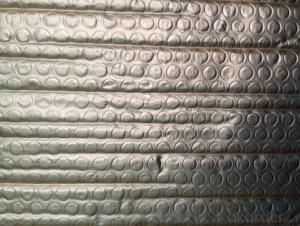Roofing insulation is a crucial aspect of home construction and renovation. It plays a significant role in maintaining the indoor temperature, reducing energy consumption, and ensuring the longevity of the roof. One of the most popular and effective types of roofing insulation is foam insulation. In this article, we will explore the different types of roofing insulation foam, their benefits, and how to choose the right one for your home.
Why Choose Roofing Insulation Foam?
Roofing insulation foam is an excellent choice for several reasons. Firstly, it provides excellent thermal insulation, keeping your home warm in the winter and cool in the summer. This can lead to significant energy savings and a more comfortable living environment. Secondly, foam insulation is lightweight, making it easy to install and reducing the structural load on your roof. Thirdly, it is non-combustible and resistant to mold, mildew, and pests, ensuring a safe and healthy home.
Types of Roofing Insulation Foam
There are several types of roofing insulation foam available in the market, each with its unique properties and benefits. Let’s take a closer look at some of the most common types:
1. Spray Foam Insulation: This type of insulation is sprayed onto the roof surface and expands to fill gaps and cracks, providing an airtight seal. It is highly effective in preventing air leakage and improving energy efficiency.
2. Rigid Foam Insulation: Rigid foam insulation is made from rigid materials like polyisocyanurate or extruded polystyrene. It is known for its high R-value, making it an excellent choice for areas with extreme temperature fluctuations.
3. Closed-Cell Spray Foam Insulation: Closed-cell foam insulation is denser and more resistant to water absorption than open-cell foam. It provides excellent insulation and moisture protection, making it ideal for wet or humid climates.
4. Open-Cell Spray Foam Insulation: Open-cell foam insulation is less dense and more flexible than closed-cell foam. It is less expensive and can provide good insulation, but it is not as effective in preventing water absorption.
Benefits of Roofing Insulation Foam
Roofing insulation foam offers numerous benefits that make it a popular choice for homeowners and builders. Some of the key benefits include:
– Improved Indoor Comfort: By regulating indoor temperatures, foam insulation creates a more comfortable living environment.
– Reduced Energy Bills: Effective insulation reduces the need for heating and cooling, leading to lower energy consumption and savings on utility bills.
– Enhanced Structural Integrity: Foam insulation adheres to the roof surface, providing additional support and reducing the risk of leaks and damage.
– Increased Durability: Foam insulation is resistant to mold, mildew, and pests, ensuring a longer-lasting roof.
How to Choose the Right Roofing Insulation Foam
Choosing the right roofing insulation foam depends on several factors, including your climate, budget, and specific needs. Here are some tips to help you make the right decision:
1. Consider Your Climate: The type of foam insulation you choose should be suitable for your local climate. For example, closed-cell foam is ideal for wet or humid climates, while rigid foam is suitable for areas with extreme temperature variations.
2. Assess Your Budget: Foam insulation can vary in price, so it’s essential to consider your budget when making a decision. While some types of foam insulation may be more expensive, they may also offer better performance and longevity.
3. Evaluate Your Roof’s Condition: The condition of your roof plays a significant role in determining the type of insulation you need. If your roof has gaps or cracks, spray foam insulation may be the best option to provide an airtight seal.
4. Consult a Professional: It’s always a good idea to consult with a professional contractor or insulation expert to determine the best type of insulation for your specific needs and circumstances.
In conclusion, roofing insulation foam is a versatile and effective solution for improving energy efficiency, comfort, and durability in your home. By understanding the different types of foam insulation and considering factors such as climate, budget, and roof condition, you can make an informed decision and choose the right insulation for your home.

